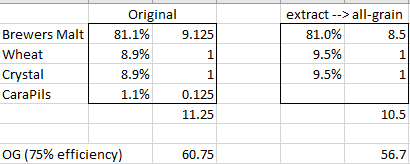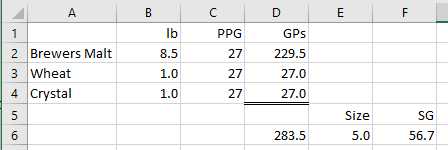Heitdj22
Active Member
- Joined
- Nov 11, 2020
- Messages
- 35
- Reaction score
- 6
Hi all
I am looking to make another allgrain brew. I have an extract recipe and converted it to a hazy blackberry ale last time I did it... however, I am looking for recommendations on converting the extract to grain.
Extract bill:
6 lbs light malt LME
1 lb wheat male LME
1 lb 20L crystal
Hops are Tettanger
Yeast is WLP008 (EAST COAST ALE)
I add honey during the end if the boil. And rack to a secondary fruit fermentation.
End product is a nice hazy purplish color.
And around 7.5% ABV.
I am looking to make another allgrain brew. I have an extract recipe and converted it to a hazy blackberry ale last time I did it... however, I am looking for recommendations on converting the extract to grain.
Extract bill:
6 lbs light malt LME
1 lb wheat male LME
1 lb 20L crystal
Hops are Tettanger
Yeast is WLP008 (EAST COAST ALE)
I add honey during the end if the boil. And rack to a secondary fruit fermentation.
End product is a nice hazy purplish color.
And around 7.5% ABV.





















































![Craft A Brew - Safale S-04 Dry Yeast - Fermentis - English Ale Dry Yeast - For English and American Ales and Hard Apple Ciders - Ingredients for Home Brewing - Beer Making Supplies - [1 Pack]](https://m.media-amazon.com/images/I/41fVGNh6JfL._SL500_.jpg)







